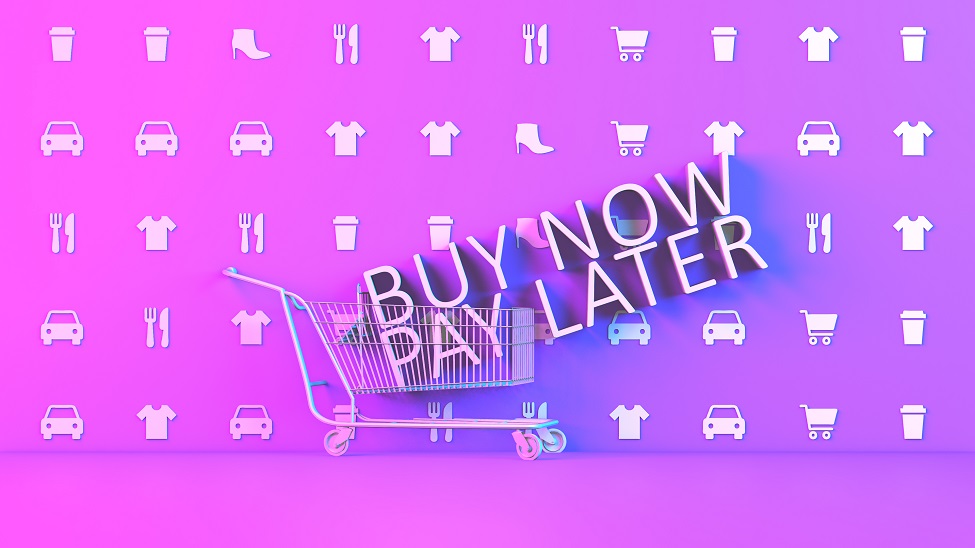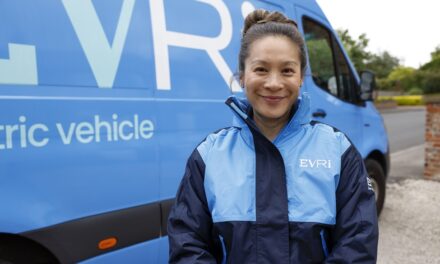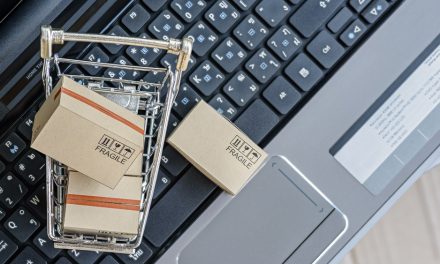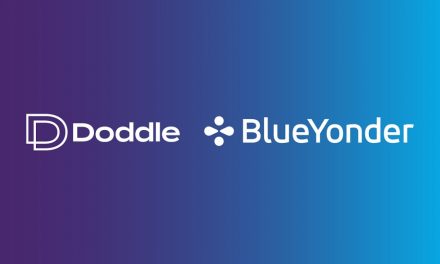
What E-commerce Delivery Providers can learn from the world of payments

Mike Richmond, Doddle CRO explores the success of Buy Now Pay Later businesses and looks at how carriers and postal operators could use a similar model to differentiate themselves.
At its most basic, the purpose of an e-commerce checkout is to get answers to two questions. How do you want to physically receive the products you’ve just put in your virtual shopping basket, and how do you want to pay for them?
Delivery and payments have been side-by-side in this checkout arrangement for most of e-commerce history. Recent years have seen the entrance of a few newer payments players, in the form of Buy-Now, Pay Later (BNPL) businesses. Some of these have reached incredible scale and valuations, notably Klarna, which was valued at $45.6 billion in 2021, raising $639 million in funding at that price, and Afterpay, which in February ’21 had a market capitalisation of $35 billion USD.
However, amidst the turbulent economic conditions of mid-2022, both these businesses, as well as their BNPL triplet, Affirm, are feeling some real pain. Klarna announced layoffs of up to 10% of its workforce in May, and reports in TechCrunch in June suggest that its potential valuation will be cut below $15bn. Afterpay’s market cap shrank to $14.7 billion at the start of the year, before being acquired by Block; and Affirm’s share price has fallen from a high of nearly $170 per share less than a year ago to under $20 today.
 How did BNPL grow so rapidly?
How did BNPL grow so rapidly?
BNPL businesses typically charge fees as a percentage of transactions processed. For retailers to be willing to accept that, they need to be able to show concretely that the right payment option can increase sales (via average order value, conversion rate or purchase frequency) by a larger percentage than the fee.
Therein lies the first lesson. BNPL providers focused hard on the most essential metric any e-commerce merchant cares about – conversion – and were able to prove their impact on that metric with compelling and credible data. They avoided a sales conversation about minimising their cost to the retailer, and instead had one about the demonstrable value they added.
In so doing, BNPL quickly became the preferred payment option in online checkouts. For a period, it was hard to avoid Klarna in the ASOS app in the UK, as the fast fashion pioneer became hooked on the conversion stats.
Why does this matter to delivery providers?
For parcel delivery businesses, the lesson is clear. Today, their selling messages are focused on service, on price, on cut-off times for next-day delivery, on network coverage, et cetera. These are operational concerns, but they’re not consumer-focused.
How can delivery businesses focus a sales conversation on value and not on cost? They have to focus on the power and impact a delivery choice can have on conversion, average order value, retention and purchase frequency. Those metrics championed by BNPL giants are equally appropriate to delivery providers – both are about the checkout, and getting the customer to complete the sale effectively, with the right option that minimises friction for them.
Certainly, the extension of credit to new audiences helped BNPL providers to grease the wheels and increase conversion for merchants who previously hadn’t had such a snappy way to offer a line of credit to customers. Parcel carriers and postal operators serving e-commerce businesses don’t have quite the same advantage of novelty to show that they can make a tangible difference at the checkout – they’re a must-have, not a bonus. But the great innovation of BNPL was not in the core concept. Credit has been around forever. Their success came down to two things: simple, powerful branding, and finding a receptive, younger audience who did not have access to traditional credit – but had much less hesitancy about “buying now and paying later”.
Why delivery beats payment as a conversion factor
There’s space for delivery businesses to market themselves as e-commerce partners adding value to key metrics, and there’s even data to suggest that they might be more entitled to position themselves in this way than the payment providers are.
Again, if checkouts are about sorting out payment and delivery, it turns out that having the wrong delivery options is a lot more detrimental to conversion (as measured by basket abandonment) than the wrong payments options. UPS research found that three of the top 6 reasons for basket abandonment were delivery related. Payment options came in 7th.
Consumers want fast delivery, they want cheap delivery, they want their e-commerce shopping to arrive before they go off on holiday or before their friend’s birthday. There’s nothing new there, but the point is that when don’t finish their shopping, delivery is frequently why. This should be gold dust for parcel carriers selling to e-commerce merchants, whose current delivery options could be leaving significant chunks of revenue on the table.
It’s not just at the checkout – delivery has impacts across the post-purchase journey too. 84% of shoppers say that a poor delivery experience makes them unlikely to shop again with a retailer. By building a brand that focuses on fixing or preventing these issues for consumers (and then pointing retailers to the clear upstream benefits in terms of e-commerce KPIs), carriers and postal operators could start to differentiate themselves and have sales conversations based on value, like the payments and BNPL providers are able to.
The opportunity for delivery players to reposition
Think about Amazon’s Prime delivery proposition, and how remarkably few delivery providers have a brand or product branding that is anywhere near as immediately recognisable and powerful. Prime stands for fast, reliable, cheap delivery, with tons of options around preferred delivery dates, out-of-home delivery locations, subscription-based repeat deliveries, et cetera. Amazon clearly knows how much this delivery brand means for conversion and loyalty, given how prominent it is on the site and how much its algorithms prioritise Prime results in search and in its hyper-competitive marketplace listings.
That’s not a million miles from what the likes of Klarna and Afterpay have been doing with BNPL. Their brands are instantly recognisable and stand for simplicity in payment, flexibility, and the stress reduction of not spending so much money in one go. Carriers could benefit from focusing their consumer branding on similar elements – convenience, flexibility, and sustainability. They might not even need to employ Snoop Dogg, a la Klarna’s TV campaign (although it surely wouldn’t hurt to.)
In June, Doddle surveyed 224 European retailers to learn how the introduction of out-of-home (OOH) delivery options on their checkout changed their performance. We learned that after introducing OOH, 50% saw a rise in conversion rate, 55% saw higher average order values and 57% said that NPS increased. Promoting these benefits will help carriers to both reduce delivery cost thanks to increased consolidation, and position them differently to their retail audience.
What’s going wrong for BNPL now?
Affirm, Afterpay and Klarna have suffered in part because their valuations were inflated during the tech stock bubble in 2021, but also due to significantly increased competition, as operators like PayPal and Apple Pay came out with their own versions of buy-now-pay-later. There may also be regulatory impositions coming down the track, with the UK government planning to sweep BNPL into the same regulatory bucket as traditional credit providers, with the same regulatory obligations, regardless of whether or not they charge interest.
There are also ethical and PR issues, with one Qualtrics survey estimating that half of young people (Gen Z/millennials) had missed payments for BNPL services, and many of those ended up with worse credit scores as a result. BNPL players didn’t just make credit accessible – they focused on marketing it to young people, and got them to spend more than they could afford. That has generated short-term growth and long-term attention from regulators.
The part to focus on from a carrier perspective is what the BNPL giants start doing next. They’ll be looking for ways to differentiate from the competition, and have already started looking at returns, with Paypal acquiring Happy Returns and Affirm snapping up Returnly. Flush with investor cash and looking at the same data covered in this piece, payments players might decide they could offer a full-checkout and post-purchase experience by dropping some of their billions on achieving the one-click checkout. That CX nirvana still escapes everyone but Amazon, 15 years after it was first seriously discussed. If not that, then perhaps the likes of Apple Pay will move towards a delivery management service for consumers, continuing to cut carriers off from the most important decision makers in e-commerce.
The latter points might not feel too scary right now. We’ve already started to see some of the massive hype of the last few years around BNPL die back a little, with Klarna cutting jobs and valuations returning earthwards.
The point is that for all the glitz and glamour, payments are just as boring and functional as delivery services at the end of the day – and there’s a huge lesson there for delivery providers about how much more valuable they could be perceived as. That extends to customers, who have been conditioned to expect “free” delivery and fast turnaround times without much understanding of the costs involved. Without being able to sell on alternative factors (like flexibility), carriers risk being further anonymised, commoditised and disrupted.










